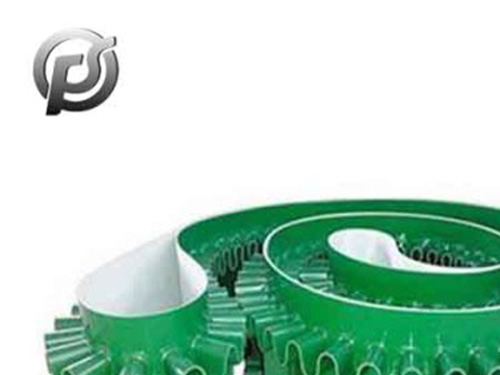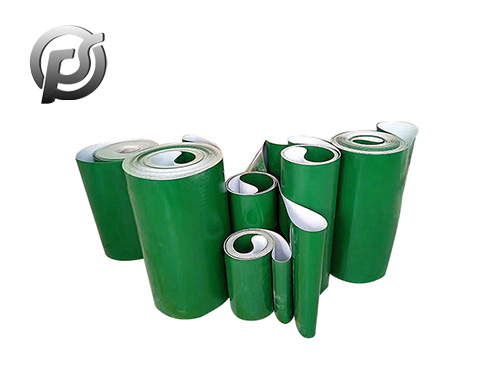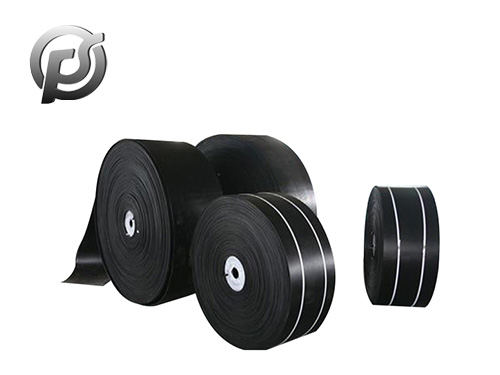Principles of Design
In the design process of the long distance
belt conveyor, in line with the principle of improving the reliability of equipment and reducing the project cost, while considering the terrain conditions, installation difficulty, maintenance operability, power supply and water supply arrangement, civil engineering and other factors, the long distance belt conveyor is mainly arranged along the gentle terrain of the river valley. Along the way, avoid villages and towns, existing buildings, steep hills, waters and areas with poor geological conditions as much as possible. Meanwhile, reduce the occupation of cultivated land as much as possible and do not damage the local ecological environment.
Most of the conveyor system adopts the form of steel structure overhead trestle, which crosses the valley, highway, river and other facilities along the way. The overhead height meets the requirements of the limit stipulated by the state, and does not affect the construction of the original facilities and road traffic. The belt conveyor is sealed with color steel plate throughout the whole process, and the whole material is not exposed to transport, which is not affected by rain, wind, snow and other climatic conditions, so as to avoid dust and noise pollution. The transmission system is equipped with transfer station, drive station house and substation, as close as possible to the highway and near the intersection with the existing highway, convenient installation and transportation and daily maintenance.
Key Points of Design
2.1 Choose reasonable buffer receiving device
The service life of the belt of the long distance belt conveyor needs to be guaranteed by measures to reduce the impact and wear of the belt is the main measure. The belt conveyor bears a large impact at the material point, so reasonable technology and method should be adopted in the design to reduce the impact on the belt. In addition to reducing the blanking height difference, reasonable buffer facilities should be selected. At present, the most advanced and suitable is the integral buffer receiving device with supporting plate, which combines the advantages of the buffer roller and the buffer press.
Generally, the spacing of the buffer roller is about 400 mm, and the belt is suspended between the two buffer rollers. At this time, the impact of the material will cause great damage to the belt, especially the material with large lumpiness and sharp edges or sharp foreign bodies (iron, lining, etc.). Once it falls on the belt between the two rollers, the belt will penetrate and cut. If not handled in time, the whole tape will be split into two, which is fatal to the destruction of large steel rope core tape. For this reason, a rigid supporting plate is designed between each buffer roller. During normal operation, the rubber belt does not contact with the supporting plate. Once large materials and foreign bodies impact the rubber belt, the rubber belt will contact with the rigid supporting plate after deformation due to the force.
2. The tube formation and expansion of the tubular belt must meet the progressive principle
The transition section of the conveyor belt from flat to round should meet the principle of gradualism. The length of the ITD is mainly determined by the allowable elongation of the conveyor belt and the requirement that the material be gradually rolled into the range of the round tube. The conveyor belt in the transition section changes from flat shape to round pipe, and the edge of the belt will produce large additional deformation. The extension strain of the edge can be calculated similar to that of the transition section of a trough conveyor. Generally, the length of the transition section can be 25 times of the diameter of the round pipe.
3. Suitable conveyor belt cleaning device should be selected
Usually, the cleaning facilities used for belt conveyor mainly include scraper cleaning device, roller cleaning device, brush cleaning device, vibration cleaning device, water spray and wiper cleaning device. You can choose according to the actual situation.
4. Rotation of conveyor belt
The turning cleaning of the conveyor belt is the fundamental measure to prevent the clogging of the lower space of the conveyor belt and the adhesion of materials to the idlers. In this method, the return conveyor belt of the conveyor terminal is turned over 180° with the help of the guide roller, and the return empty side is in contact with the lower roller with a clean side, which can avoid material adhesion to the roller and the dropping of adhesive material along the conveyor line, reduce the wear of the conveyor belt and the roller, and improve the utilization rate of the conveyor belt covering layer.
The setting of the tape turning device can ensure that the bearing edge of the tape is always on the top, so as to avoid pollution along the conveying line caused by shaking off the adhesive material on the tape during operation. The other is to reduce the wear between the belt bearing surface and the return roller, so as to extend the service life of the roller and the belt. While prolonging the service life of the tape equipment, it can also reduce the power consumption, reflecting the design concept of energy saving and consumption reduction.
The main turning methods of conveyor belt are: free turning, forced turning, directional turning and tubular turning. The first two are applicable to the conveyor belt with narrow bandwidth, and the last two are applicable to the conveyor belt with any bandwidth, and are widely used in long-distance belt conveyors.
According to the different strength of the conveyor belt, the turning length of the canvas core conveyor belt is 8~12 times of the bandwidth, and the turning length of the steel rope core conveyor belt is 15~25 times of the bandwidth.
5. Choose the necessary mechanical and electrical protection devices
The belt conveyor operates normally under the protection of the electromechanical protection device, and protects the main parts of the conveyor in case of an accident.
(1) Protection device to prevent deviation. For the long distance belt conveyor, in addition to the setting of the aligning trusteing group and the reasonable arrangement of the forward side roller, the appropriate number of automatic deviation adjustment devices should be selected according to the length of the belt conveyor and the overall arrangement. With the development of belt conveyor technology, there are various automatic deviation adjustment devices, and the most suitable automatic deviation adjustment device can be selected according to its cost and use effect [2].
(2) with speed detection protection device. Optical encoder is preferred for belt speed detection of long distance belt conveyor. The speed protection device can be speed measuring generator type protection device, magnetic induction transmitter type protection device or proximity switch type speed protection device.
(3) Broken belt protection device. In order to prevent the slide after the conveyor belt is pulled off, it is necessary to set the catcher to protect the belt from breaking. The selection of the catcher should respond quickly, and the braking time and distance should be as short as possible. In addition, in the normal operation of the conveyor does not wear the conveyor belt, does not produce additional resistance, does not reduce the productivity of the conveyor. The reliability of the catcher is not affected by the degree of material filling and the Angle of conveyor installation. The most commonly used are wedge traps and roller traps.
(4) Metal debris detection and removal device. At present, the main use of metal detectors and iron removal devices. The iron removal device has belt iron removal device and hanging electromagnetic iron removal device.
(5) Longitudinal tear protection device. The anti-tear protection device of the conveyor belt has two detection methods: the detection of external changes of the conveyor belt after tearing and the detection of internal state changes.
6. Arrange plane turns reasonably according to the topography
For the long distance belt conveyor, plane turning is essential according to the terrain and the distribution of obstacles. The core of plane turning design is the design of tension and turning measures. Design points have the following aspects:
(1) Conveyor line design, according to the terrain conditions of the equipment layout preliminary design of the curvature radius of the curve section of the conveyor;
(2) Preliminary selection of turning measures and corresponding parameters of idlers. Groove Angle of idlers should be 25°~55°, elevation Angle of inner curve should be less than 5°, tilt Angle of supporting rod should be 1°~2°, and tilt Angle of supporting roller should be designed into forward layout of two side idlers, so as to prevent deviation of conveyor belt;
(3) Calculate the tension of each point, and calculate the resistance of the bending section and the tension of the bending section in the turning section;
(4) Check the turning limits of the bending section;
(5) Belt conveyors are generally used for conveying materials in long distance trunk lines, to carry out a detailed dynamic analysis, and use the results to further check the turning restrictions;
(6) Additional protection measures to ensure the turning operation of the conveyor.
7. Choose reasonable energy-saving driving device
The driving device of belt conveyor not only meets the normal operation function of daily, but also meets the requirements of energy saving. The driving design of the long distance belt conveyor is mainly considered from the following aspects:
(1) The driving device should have good starting ability and large starting torque to enable the conveyor to start with load;
(2) In the startup process, the acceleration is small and reasonable enough to reduce the dynamic load of each bearing component.
(3) Multi-motor drive can make the load of each motor uniform;
(4) Reliable overload protection ability during startup and stable operation;
(5) The driving device has a good controllability, control the start, stop speed, acceleration and deceleration speed;
(6) As far as possible to make the motor no-load start, stagger the start time of each motor, reduce the motor start times, can be stopped in a short time when the conveyor does not need to stop the motor;
(7) The driving device shall include a controller with self-monitoring and self-diagnosis functions;
(8) Use controlled start/stop transmission as far as possible
 Stone Conveyor Belt: Enhancing Efficiency and Productivity in Material Handling
Stone Conveyor Belt: Enhancing Efficiency and Productivity in Material Handling
 Optimizing Operations with PE Conveyor Belts: Durability, Efficiency, and Versatility
Optimizing Operations with PE Conveyor Belts: Durability, Efficiency, and Versatility
 Exploring the Efficiency and Versatility of Light Conveyor Belts
Exploring the Efficiency and Versatility of Light Conveyor Belts